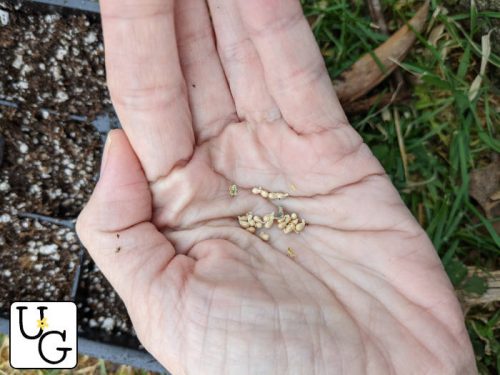Violets are beautiful spring-blooming flowers that can often be found growing wild in lawns and fields But have you ever wondered how these pretty little flowers are able to spread their seeds and propagate? Violets have developed some clever evolutionary tricks to ensure their seeds get dispersed far and wide
Violet Seed Structure
Violet seeds form inside green seed pods that hang down close to the ground after the flower has been pollinated. Inside each plump violet seed pod are around 20-50 tiny brown seeds.
The seeds have a special feature – they each have a tiny attachment called an elaiosome. The elaiosome is a type of oil-rich appendage that contains fatty acids, amino acids and sugars. This nutrient-packed treat on each violet seed plays an important role in seed dispersal, as we’ll see.
Ants Disperse Violet Seeds
Ants are one of the main agents of dispersal for violet seeds. The ants are attracted to the elaiosomes attached to the seeds. When the seed pods split open, ants will carry the seeds back to their nests and feed the nutritious elaiosomes to their larvae.
But the ants don’t actually eat or damage the seed itself. After feeding off the elaiosome, the ants will discard the seed intact. This results in the seeds ending up in the ants’ waste piles, safely away from the original parent plant.
Studies have shown that ants can move violet seeds up to 180 feet away – much farther than if the seeds had just dropped passively!
Other Dispersal Methods
Ants are the main method of dispersal, but violets have some backup plans too. If ants don’t find the seeds, the pods will eventually burst and scatter seeds up to several feet away. This is better than just dropping straight down at the base of the parent plant.
Slug slime trails have also been observed as a dispersal agent. Slugs will eat the elaiosome and leave the seed behind alive to germinate.
Finally, some seeds manage to get swept away by wind or water. However, the majority – up to 90% – get picked up by ants or slugs if given the chance.
Why Dispersal Matters
Seed dispersal is extremely important for plants like violets for several reasons:
- It reduces competition between offspring and parent plants for sunlight, water, and nutrients.
- It allows plants to colonize new areas and spread geographically.
- It reduces predation by spacing seeds away from parental plants.
So while the violet’s seductive seeds seem cleverly designed to appeal to ants, the interaction benefits both species. The ants get a nutritious meal for their larvae, and the violets get their seeds safely transported away from the parent. This fascinating partnership is just one of many ingenious methods plants have evolved for spreading their seeds far and wide.
Seed Dispersal by Explosion
FAQ
How do violets reproduce?
What is the dispersal method of violets?
Are violets self seeding?
How do you propagate a violet plant?
Violets can be propagated by seed or division. The seeds of wild violets are thrown from the plant when mature. This can be a difficult seed to germinate, so it is best to let mother nature do it for you. Just scatter seeds in the general area you wish to grow them, then watch for heart shaped leaves to emerge in spring/summer.
How does a wild violet spread?
It spreads. While some varieties of violet spread by underground stolons, the wild violet’s real secret weapon of propagation is by seed. And herein lies a strange tale. Many violet species, including the common wild violet, have two kinds of flowers. The first, normal [chasmogamous] flowers are the pretty ones we see in the spring.
How does a violet flower reproduce?
The roots of this flower are shallow rhizomes, which are thick and spread horizontally. This allows another means for the flower to reproduce, as it can form a large grouping if left unchecked from competition or herbicides. Violets can be propagated by seed or division. The seeds of wild violets are thrown from the plant when mature.
Can you grow Violets from seed?
Before we begin, let’s make sure we’re talking about growing the same kind of violets. In this article, you’ll learn to grow sweet violets or common violets (wild violets) from seed. These include Viola odorata (the English violet with fragrant flowers) and V. soraria (common blue violet widely found in North America).
- The Ultimate Guide to Growing Strawberries in Raised Beds - August 8, 2025
- No-Dig Garden Beds: The Easiest Way to Grow a Beautiful Garden - August 6, 2025
- How to Protect and Preserve Wood for Raised Garden Beds - August 6, 2025

